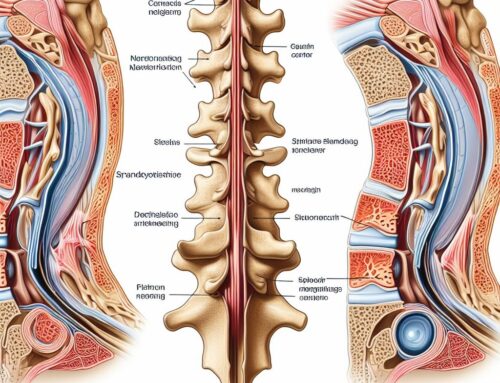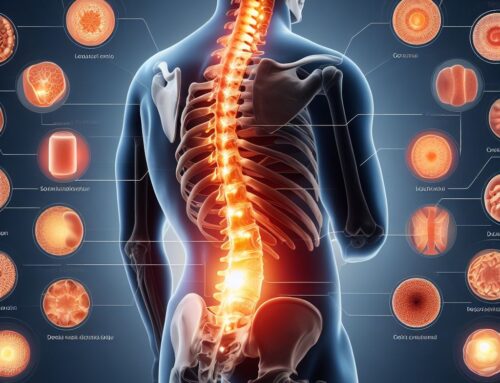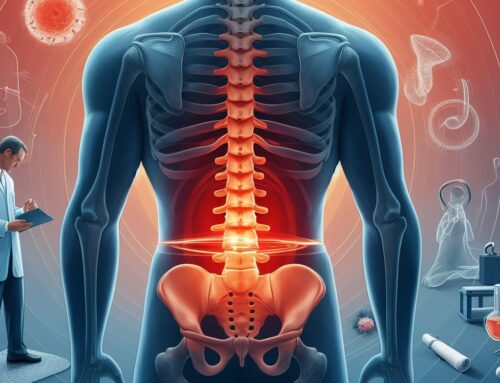Spondylolisthesis is a condition that occurs when one vertebra in the spine slips forward or backward in relation to the vertebra below it. This spinal misalignment can lead to various symptoms, ranging from mild discomfort to severe pain and neurological issues. In this comprehensive guide, we’ll explore the symptoms of spondylolisthesis, helping you understand the signs that may indicate this condition and when it’s essential to seek medical attention.
An Overview of Spondylolisthesis
What is Spondylolisthesis?
Spondylolisthesis is a spinal condition that can affect any part of the spine but is most common in the lower back (lumbar region). It typically occurs when a small stress fracture weakens the bone, allowing one vertebra to slip out of place in relation to the adjacent vertebra. This displacement can vary in severity and is often categorized into grades, ranging from Grade I (mild) to Grade V (severe).
Types of Spondylolisthesis
There are different types of spondylolisthesis, including:
- Degenerative Spondylolisthesis: This occurs due to age-related wear and tear on the spinal discs and joints.
- Isthmic Spondylolisthesis: This results from a defect in the pars interarticularis, a bony segment of the vertebral arch.
- Traumatic Spondylolisthesis: Caused by a sudden injury or fracture to the spine.
- Pathological Spondylolisthesis: A consequence of underlying medical conditions such as tumors or infections.
Recognizing the Symptoms of Spondylolisthesis
Common Symptoms
The signs and symptoms of spondylolisthesis can vary depending on the degree of slippage, the location of the affected vertebrae, and individual factors. Common symptoms include:
- Lower Back Pain: One of the most prevalent symptoms is lower back pain, which can range from mild to severe. The pain may be localized or radiate to the buttocks or thighs.
- Leg Pain: Pain, tingling, or numbness in the legs, especially in the buttocks and thighs, can occur when the displaced vertebra compresses nearby nerves.
- Hamstring Tightness: Tight hamstrings are a common complaint in individuals with spondylolisthesis. This can contribute to discomfort and difficulty with certain movements.
- Changes in Gait: Spondylolisthesis can alter a person’s gait, leading to an uneven or waddling walk.
- Loss of Bladder or Bowel Control: In rare and severe cases where the spinal cord is compressed, spondylolisthesis can lead to loss of bladder or bowel control. This is a medical emergency and requires immediate attention.
Grading and Severity
The severity of spondylolisthesis is often categorized into grades, with Grade I being the mildest and Grade V the most severe. The higher the grade, the more significant the slippage and the more likely it is to cause severe symptoms. It’s important to note that individuals with Grade I or Grade II spondylolisthesis may experience no symptoms at all.
Age and Onset
Spondylolisthesis can occur at any age, but it is more common in adults and becomes increasingly prevalent with age. In younger individuals, such as adolescents, it can be related to overuse injuries in sports or other activities.
When to Seek Medical Attention
Red Flags and Urgent Care
If you experience any of the following symptoms, it is crucial to seek immediate medical attention:
- Sudden loss of bladder or bowel control
- Severe weakness, numbness, or tingling in the legs
- Difficulty walking or maintaining balance
These symptoms may indicate significant spinal cord compression and require prompt evaluation.
Chronic or Progressive Symptoms
For chronic or progressively worsening symptoms, especially lower back pain or leg pain that interferes with daily activities, it is advisable to consult a healthcare professional. Your doctor can perform a physical examination, order imaging tests (such as X-rays, MRI, or CT scans), and provide guidance on treatment options.
Conclusion: Understanding the Signs
Spondylolisthesis can manifest with a range of symptoms, from mild discomfort to severe neurological deficits. Recognizing the signs and seeking timely medical attention is crucial for accurate diagnosis and appropriate treatment. While some individuals may experience spondylolisthesis without significant symptoms, others may require conservative treatments or, in severe cases, surgical intervention to relieve pain and restore spinal stability.





Get Social